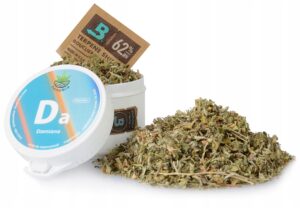Adaptogens from mushrooms have been used for centuries in traditional medicine in various regions of the world. Modern scientific research is shedding new light on their mechanism of action. In the case of the Chaga fungus (Subcortical spinneret, Inonotus obliquus), it is worth noting studies on its anti-inflammatory, antioxidant or anticancer effects, as well as data describing the effect of this adaptogen in type 2 diabetes.
Chaga subcortical glossophore in traditional medicine
The Chaga mushroom (Inonotus obliquus, subcortical spinneret) has traditionally been used to treat various gastrointestinal diseases. W article discussing the traditional use of Chaga reads that one of the oldest documents confirming the use of its fruiting bodies for medicinal purposes is Hippocrates' work "Corpus Hippocraticum" (he used infusions of this mushroom externally to wash wounds).
In Eastern Europe, the first reports of the use of Chaga mushroom date back to the 12th century. Historical sources describe the healing of a lip tumor in a Kyiv prince. The people of Siberia, on the other hand, have been using the spinneret for centuries for its anti-parasitic, anti-tuberculosis, anti-inflammatory and gastrointestinal soothing properties.
Chaga was also recommended in some regions for heart and liver diseases, most often in the form of infusions, inhalations or aqueous macerates.Relatively early attention was paid to its potential anticancer and cancer supportive effects, which was particularly important before the era of scientific oncology.
Adaptogens from Chaga mushrooms - scientific research
So far, the information gathered on the effect of subcortical spinneret on the human body comes mainly from in vitro laboratory studies and a few animal experiments. Although most authors note the need for further research, the mechanism of action of the fungus extract in certain processes in the body is already at least partially understood.
Two mechanisms of action for Chaga extracts are currently emerging:
- The first is related to effects on antioxidant enzymes and reactive oxygen species (ROS) levels.
- The second, as suggested by results research, is associated with the activity of receptors that shape the immune response in diseases involving chronic inflammation (more about PPARγ receptors here).
Chaga extract shows action:
- anti-inflammatory,
- anti-cancer,
- antioxidants,
- Protective - protects cells from oxidative stress,
- Stimulating - stimulates the immune system.
Adaptogens from the Chaga mushroom vs. insulin
According to some, the most promising finding was the demonstration that Chaga has hypoglycemic potential and increases insulin sensitivity.
W research conducted on mice, found that supplementation with spinneret extract improved glucose tolerance, sugar control and lipid metabolism. The results showed that the main active components of Inonotus obliquus extract were β-glucans, triterpenoids and polyphenols.
It has been confirmed that these components are functional elements and play a role in anti-hyperglycemic and anti-hyperlipidemic activities in type 2 diabetes.
According to the researchers, with the current state of knowledge, it can be concluded that Chaga meets the definition of a functional food and potentially positively influences health beyond basic nutrition.








